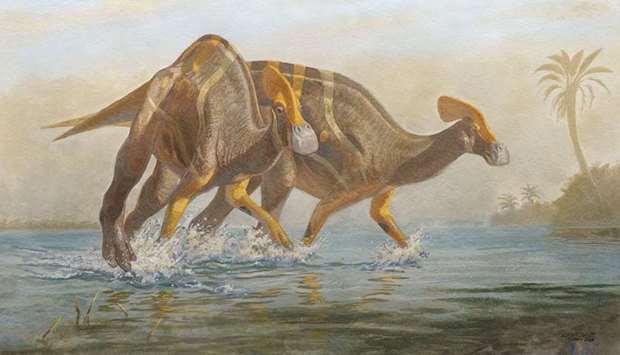A team of palaeontologists in Mexico have identified a new species of dinosaur after finding its 72mn-year-old fossilised remains almost a decade ago, Mexico’s National Institute of Anthropology and History (INAH) said on Thursday.
The new species, named Tlatolophus galorum, was identified as a crested dinosaur after 80% of its skull was recovered, allowing experts to compare it to other dinosaurs of that type, the INAH said.
The investigation, which also included specialists from the National Autonomous University of Mexico, began in 2013 with the discovery of an articulated tail in the north-central Mexican state of Coahuila, where other discoveries have been made.
“Once we recovered the tail, we continued digging below where it was located. The surprise was that we began to find bones such as the femur, the scapula and other elements,” said Alejandro Ramírez, a scientist involved in the discovery.
Later, the scientists were able to collect, clean and analyse other bone fragments from the front part of the dinosaur’s body.
The palaeontologists had in their possession the crest of the dinosaur, which was 1.32m long, as well as other parts of the skull: lower and upper jaws, palate and even a part known as the neurocranium, where the brain was housed, the INAH said.
The Mexican anthropology body also explained the meaning of the name – Tlatolophus galorum – for the new species of dinosaur.
Tlatolophus is a mixture of two words, putting together a term from the indigenous Mexican language of Nahuatl that means “word” with the Greek term meaning “crest”.
Galorum refers to the people linked to the research, the INAH said.

An illustration of the Mexico’s National Institute of Anthropology and History (INAH) shows a new species of a dinosaur named Tlatolophus galorum.


